3 Major Ways to Form a Ceramic Basin or Toilet When Producing (From Clay to Shape)
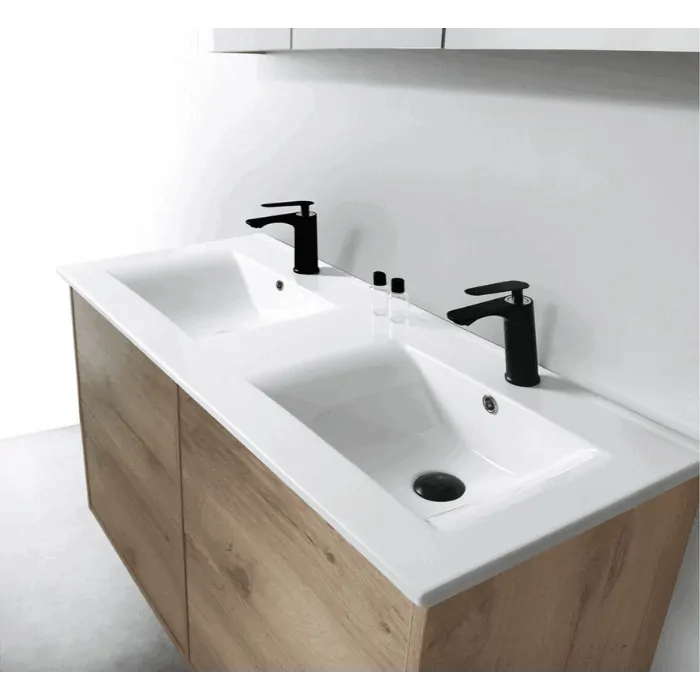
In one blog we published before (Step By Step Process of Manufacturing Ceramic Basin And Toilet), it was mentioned, among the total 13 production steps, the clay needs to be shaped from a flowing state to the shape of a ceramic basin or toilet (The 3rd step in the 13 steps). So, what are the main methods to form the shape (or design) of a porcelain-made sanitary ware? What are their differences and their relative advantages and disadvantages? This article will discuss these questions.
Forming Method 1: Ground Molding
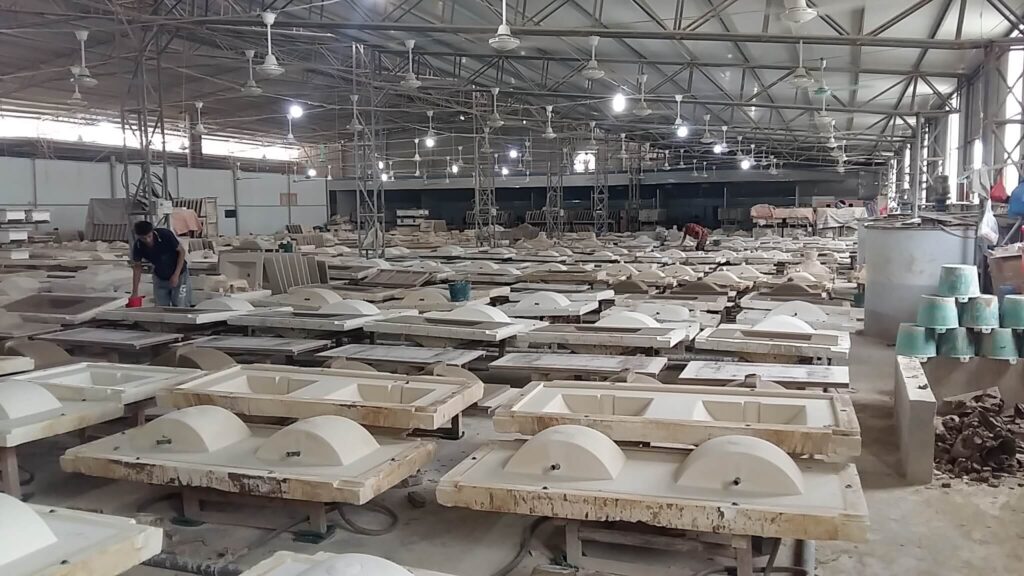
What is: Ground molding, as the name suggests, are the molds placed on the ground for producing ceramic basins or ceramic toilets (the molds do not directly touch the ground, and there are brackets to separate the ground and the molds).
The plaster molds are applied in this forming method, to help the clay form and absorb moisture.
Applications/Products: Generally used in the production of small-sized and lightweight products such as ceramic under-counter basins, washbasins, cabinet basins, etc.
Advantages: Low production cost, flexible to arrange different order quantities.
Disadvantages: The plaster molds occupy a large area, the production cycle is long, it adds more operation processes for workers, thus the production efficiency is low.
At the same time, the ceramic green body produced by plaster molds has high water content and low density (compared with high-pressure slip casting). It may shrink or deform while burning in the 1280-degree kiln. Which requires the product formula and inspection in every step should be very careful.
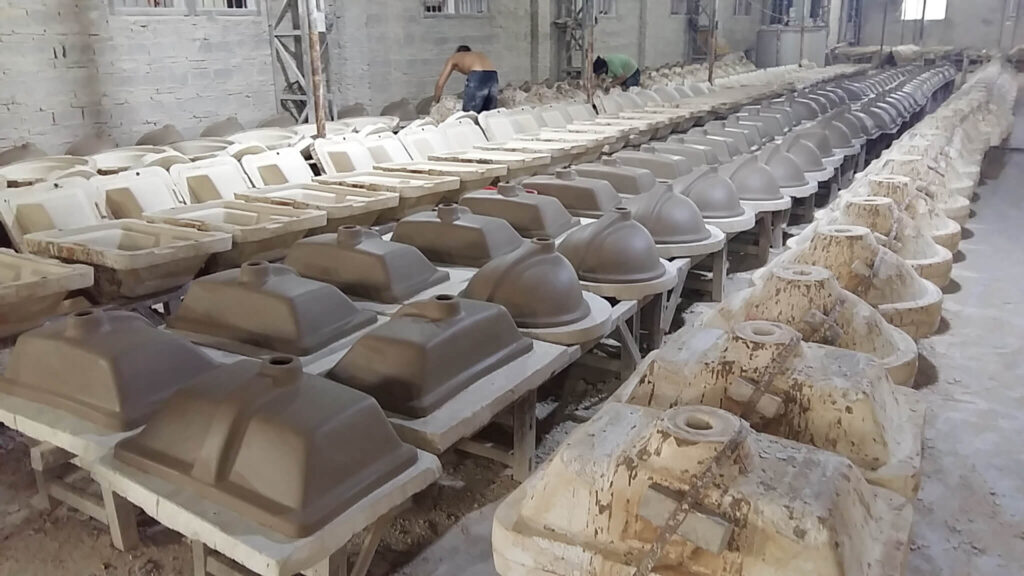
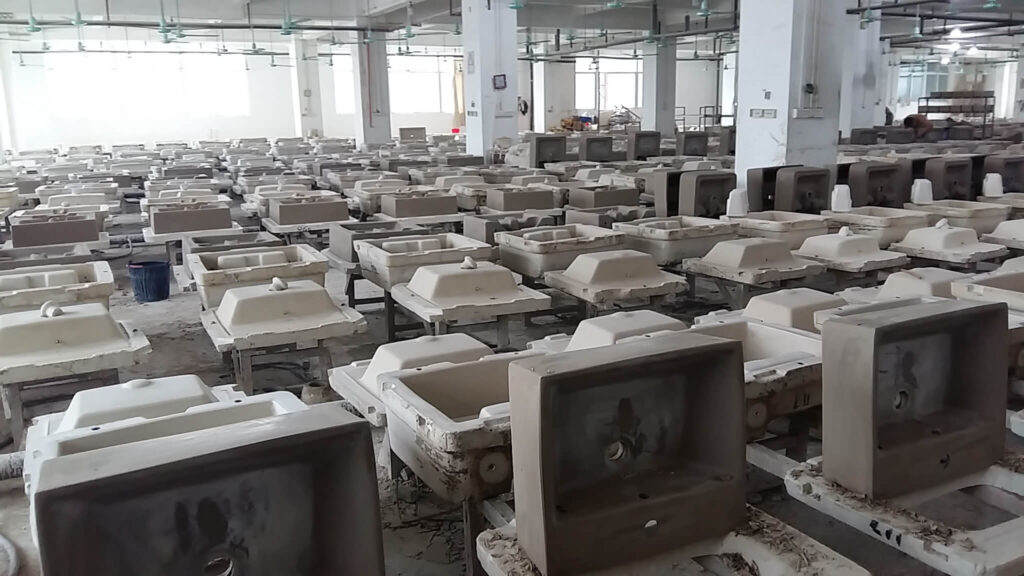
Forming Method 2: Vertical Line Molding
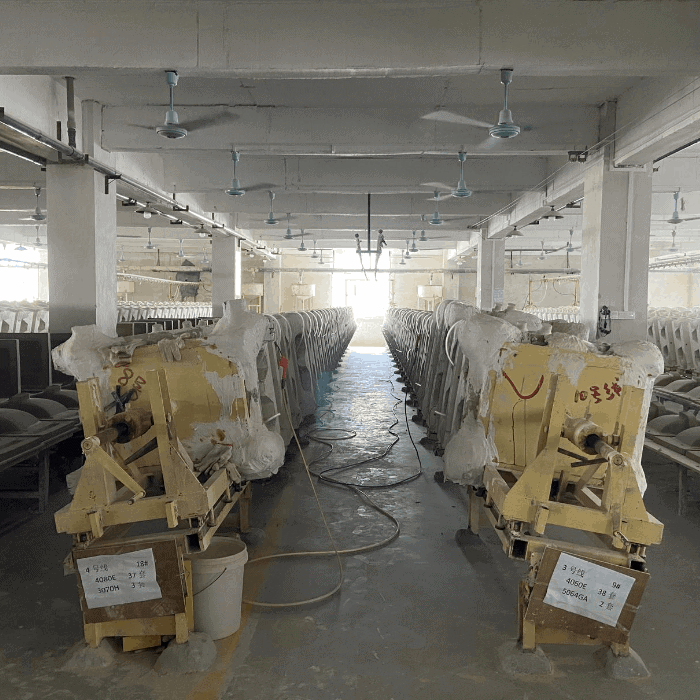
What is: The plaster molds are erected side by side and one by one (compared with the ground, they are erected at 90 degrees), and the molding process of ceramic basins or toilets is completed on the same vertical grouting production line.
Applications/Products: One-piece toilet, two-piece toilet, pedestal basin, vanity basin, etc.
Advantages: The mold’s clamping and demoulding are completed automatically, which reduces the number of operators, reduces the labor intensity, and improves production efficiency.
Disadvantages: Though the ceramic basin and toilet’s green body are grouted vertically, it saved the space on the ground, the disadvantages of using the plaster as a production mold still exist.
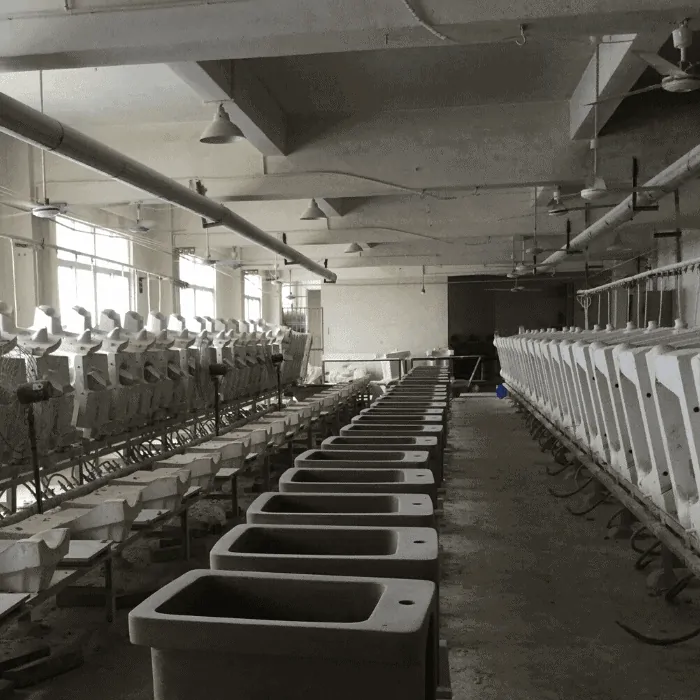
Forming Method 3: High-Pressure Slip Casting

What is: High-pressure slip casting is actually in the process of grouting, applying certain pressure to the clay-filled in the mold to discharge water, so that the green body can be formed quickly. It is a filtered formation.
(There is no certain standard for the definition of ‘high pressure’ in high-pressure grouting. It is generally believed that pressure grouting greater than 0.2MPa can be called high-pressure grouting. Some scholars also believe that the mud pressure above 1.0MPa can be called high-pressure grouting. Generally, high-pressure grouting can be defined as follows: it’s a grouting method that uses the organic synthetic resin molds, the grouting pressure is above 1.0MPa, the grouting cycle is about 20 to 50 minutes, and it can realize continuous production.)
Applications/Products: Cabinet basin, vanity basin, toilet, washbasin, etc.
Advantages:
The forming speed is fast, and the green body strength is high.
It makes the green body in low water content, high density, small shrinkage, and not easy to deform after burning. This can also lead to improving the surface flatness and surface quality with the glaze.
The production is completed automatically in a short production.
Overall, it makes the production in larger output per unit area of the plant, high efficiency, high output, high quality, and low cost.
Disadvantages: Cost of the equipment and molds are expensive and require large-scale order production.
Conclusion:
The forming way for a ceramic basin or toilet is created and applied at a certain time and market demands. As overseas demands increase, they require a higher daily output and steady quality from Chinese sanitary ware factories. The development of innovation and technology in China can also fulfill the needs of different countries now.
SUNREX Sanitary Ware always strives to provide high-quality sanitary wares to our customers and markets. If you have purchasing needs for your wholesale, retail, brand, or real estate (hotel, apartment, villa) business, you could always contact us for more suggestions.
SUNREX Email: info@cnsunrex.com (usually reply within 1 to 8 hours), Telephone: +86 757 8533 8473, Whatsapp: +86 137 5173 6372 (Tiffany Ho)
Look forward to hearing from you today.

